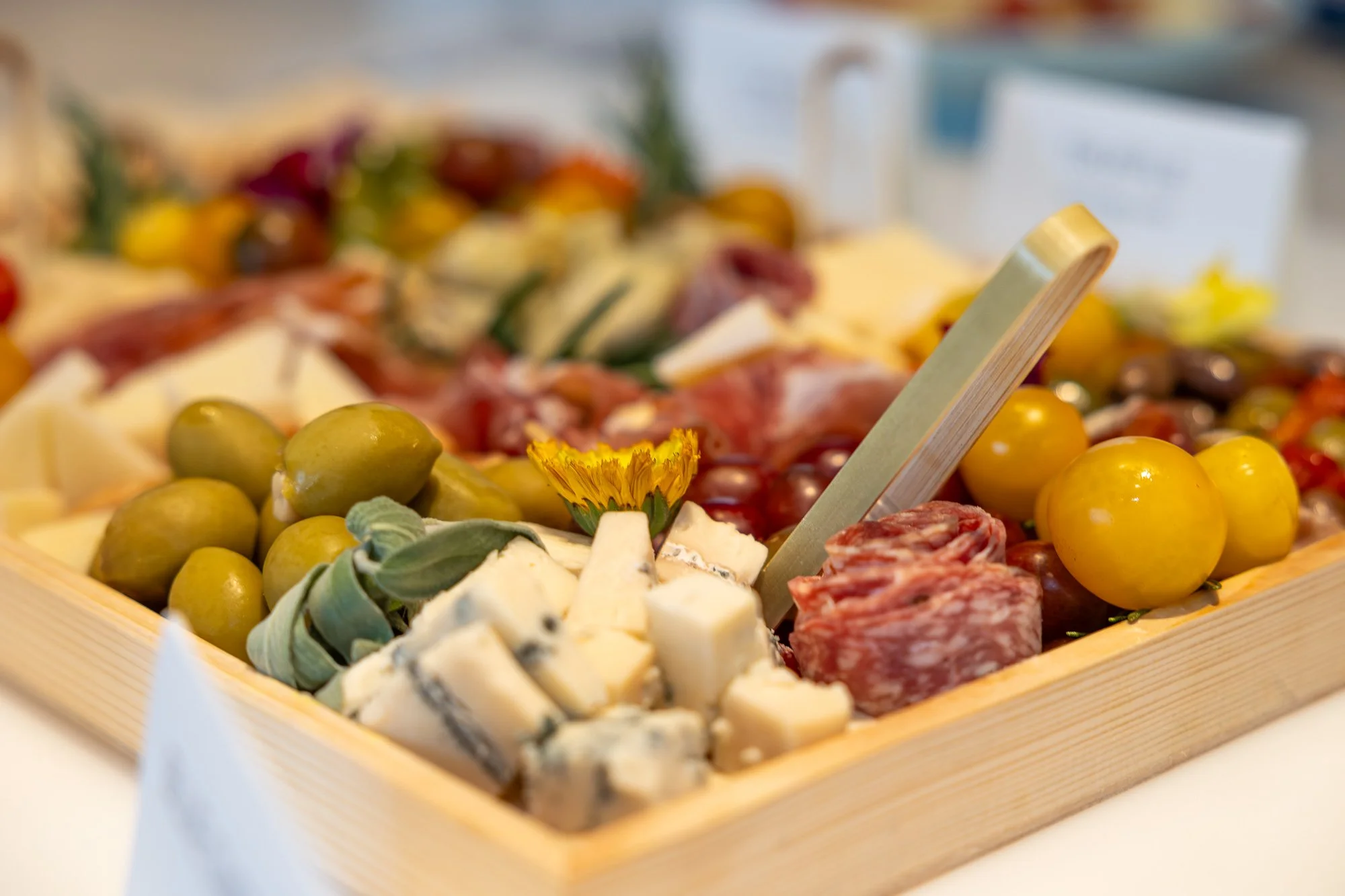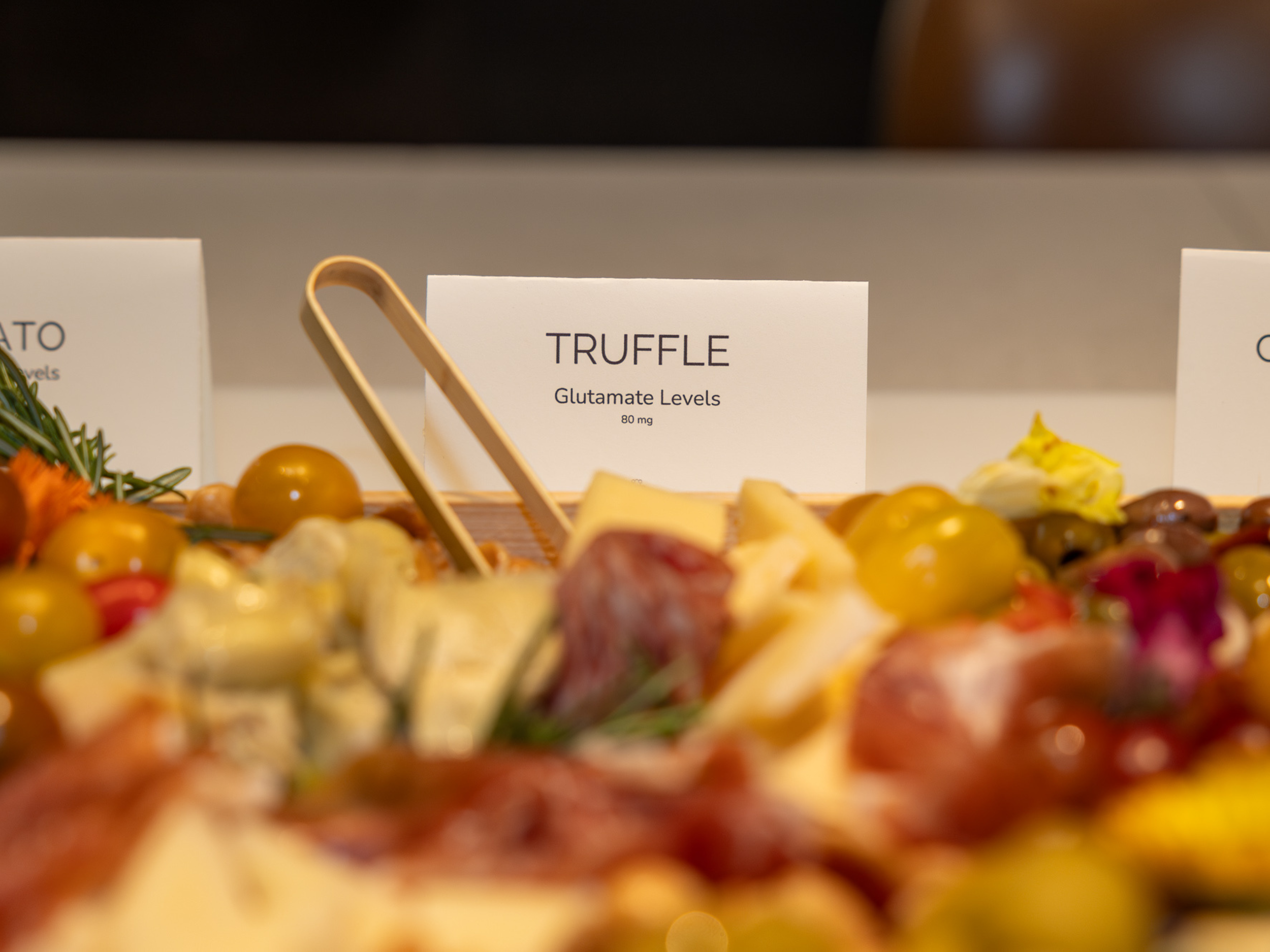
Spices & Umami
Finding harmony through flavor
Effective communication is about depth and nuance.
Just as distinct spices need balance to create a mouthwatering dish, harmony within groups comes from the synergy of different communication preferences—from "Tell" assertive to "Ask" assertive, and from "Results First" to "Relationships First." We use the complexity of spices and the relationships between the basic tastes as a metaphor for our Finding Flavor and Communication Harmony workshop.
In this food-forward workshop, participants:
Engage in sensory explorations of the basic tastes to create sweet and savory flavor surprises and delights.
Shared discovery of umami, savory depth, gives us a tangible anchor to discuss the power of intentional communication.
Tasting foods with evocative spices and flavors gives us reasons to share our preferences and recognize the preferences of others.
Building complex flavor memories together, participants in our workshops gain a deeper understanding of themselves and their peers, laying the groundwork for respectful collaboration.
What Spices & Umami mean to us: the science (and the mystery) of taste
Our fascination with these flavors is rooted in science, history and their ability to shift our perception.
Umami & Nuance:
Umami is a Japanese word that refers to the savory flavor that indicates the presence of certain amino acids, glutamates, in foods. This flavor can be naturally occurring or enhanced by aging and fermentation. We can think of glutamates as flavor enhancers, since experiencing umami is often more of a sensation than a flavor, a satisfying nuanced richness encouraging us to eat the fat, protein, and vitamin-rich foods that we need to survive.
Spices & Harmony:
Since time immemorial, humans have used blends of herbs and spices to create community-relevant flavors. Many of the most widely used ingredients —like peppers, cinnamon, or garlic— create mouth sensations like piquancy/spicy or astringency. Countless global cuisines rely on these elements to highlight or balance rich foods, both sweet and savory. Challenging ourselves to taste from another’s perspective gives us truly personal insight to how others experience their world, and how they like it seasoned!
Make It Your Own: Recipes and Resources
We see spices as versatile solos and powerful harmonies, just like the communication flows of groups navigating change. Our core blends— Umami Boost, Nordic Spice, Hawajj, and Rose Harissa—are designed to be combined for even more depth, representing unique blended conversations that create a symphony of flavor and discovery. The sensory mash-up of harmonious voices and harmonious flavors creates lasting memories.
-
We created this dry spice blend of umami-boosting herbs and vegetables like dill and onion. Sumac adds a tangy sourness that brightens anything it touches.
Ways we use it:
Coat broccoli with oil, salt, and umami boost and roast hot and fast
Sprinkle onto hot buttered popcorn
Mix with feta cheese and yogurt for a quick and tangy dip
-
Featuring fennel, anise, and caraway, this unique blend gives your mouth the unexpected cooling blast of spicy nuttiness. Cool a sour with a hit of Nordic spice!
Ways we use it:
Steep in a french press with coffee
Add sugar and salt to make a dry rub for poultry
Add to a fruit crumble- we love it with pears and figs
-
The birthplace of coffee also originated flavors to enhance the coffee experience. Our version of this Jewish/Yemeni coffee spice blends sweet and savory spices like cinnamon, cumin, clove, and black pepper that compliment many other foods and beverages.
Ways we use it:
Steam into milk for a distinctive latte
Add salt to make a dry rub for steak or cauliflower
Add to Brownies or sprinkle on our Miso hot chocolate
-
A refined take on the smoky, spicy North African spice blend that highlights various chilis balanced with sour sumac and grounded by aromatic rose petals.
Ways we use it:
Mix a pinch into a Bloody Mary or Michelada cocktail
Combine with our Nordic Spice to coat roast chicken or potatoes for a complexly flavored dish
Sprinkle on an avocado tartine with poached eggs

How to find Umami
Umami can be tricky to isolate on the palate- in fact, it is often experienced as more of a sensation than a flavor.
Umami flavor is present in more foods than you may realize. Once you know where it comes from, you can learn how to build it into your everyday cooking.
This tasting guide will help you learn to identify the sensation of umami.
You’ll Need:
2-3 types of Umami Rich foods (refer to the Finding Umami chart for ideas)
1/4 cup hummus, cream cheese, or whipped feta
2 pieces of shaved parmesan or seaweed snacks
5-6 olives or cherry tomatoes
1 tablespoon miso paste mixed with warm water
1 teaspoon umami-boosting herbs like dill, sumac or mustard (or try our Umami Boost spice blend)
1/4 teaspoon soy sauce/tamari/shoyu/garum
1-2 plain crackers
8 ounces room temperature water
Arrange your umami foods on a platter and/or in small bowls. Have a sip of water and a cracker to cleanse your palate.
Begin by using all of your senses- note appearance, aroma, and sound.
Bring the food to your nose and inhale deeply. Take a small bite and chew slowly, allowing it to coat your entire mouth before swallowing.
Does the flavor coat your mouth? Does it linger on your tongue after the other flavors have dissipated? If the answer is yes, you’re tasting umami!
Cleanse your palate again with water and a bite of bread then repeat these steps with the other foods. Which foods are more umami than others?
Try combining items for more flavor. Wrap a tomato in seaweed or sprinkle Umami Boost on a dollop of hummus.



